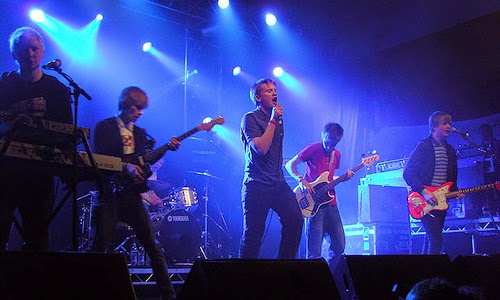Many artists at varying levels of success put little thought into their stage show, and it shows. It's a rare performer that can captivate an audience by his or her performance alone, and most audiences, even on a club level, expect to be entertained on multiple levels these days.
In the following excerpt from my
How To Make Your Band Sound Great book, I point out the differences between an amateur show, one that's tight and professional, and a big production show that you'll see from a typical arena act. Which one do you fall into?
"So what is a Show exactly. It’s much more than just a collection of songs. While the world is full of performers that have seemingly no stage show, there’s a lot more that goes on than meets the eye.
Everyone can name a great performer who just stands there and plays and gets rave reviews and while that can be you too, today’s audiences are a lot more sophisticated and require a certain level of professionalism from a performer, even with a minimal show. Let’s look at some typical shows and spot the differences.
An Amateur Show
In an amateur show you’ll typically find the following traits:
- The band doesn’t know what song to play next
- The band tunes up in-between songs
- The band has mindless banter with audience
- The band has inside-jokes that only the band or a few people around the band understand
- The band takes too much time between songs
- The band keeps the audience waiting while changing guitars, clothes, etc
- The band doesn’t acknowledge the audience, or worse, disrespects the audience
A Tight, Professional Show
Likewise, in a tight, professional show you’ll typically find the following traits:
- The band has a set list and knows exactly what they’ll be playing and how much time it will take
- The band knows exactly what will happen in-between songs
- The band knows exactly when, where and how the audience will be addressed
- The band has as little time possible between songs, or has something predetermined that will entertain in those spaces
- The band plays to the room
A Big Production Show
Not only observes all of the above, but has the entire show planned
- The band designs the set for maximum audience impact
- The band works out sound and music cues beforehand
- The band works out lighting cues beforehand
- The band works out wardrobe, guitar changes, etc. beforehand"
One tip - the old showbiz adage of “always leave them wanting more” really works. You’re a lot better off to leave too early than too late, so sometimes just a single encore song (or none at all) is really the best."
----------------------------------



